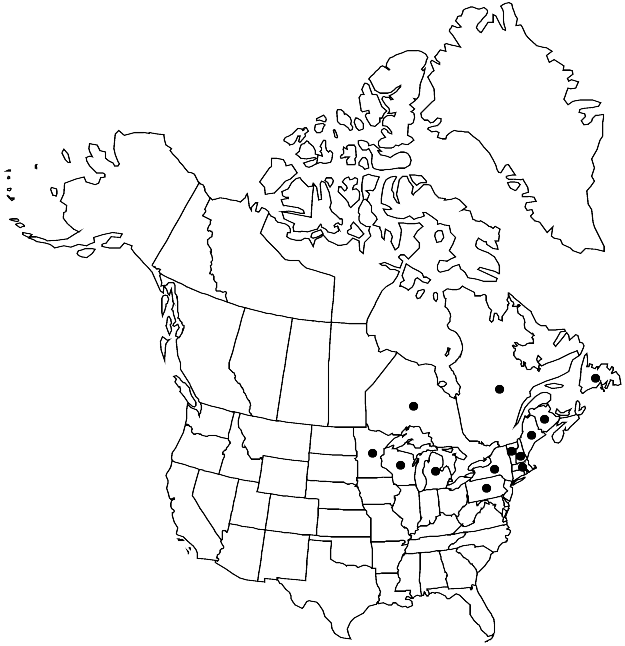Dichelyma pallescens
in P. Bruch and W. P. Schimper, Bryol. Europ. 5: 24. 1846.
Plants to 10 cm, green, yellowish, or yellowbrown. Stems with axillary hairs 140–200 µm, basal-cell 1, quadrate to subrectangular, distal cells 2–5, long-cylindric to oblong. Leaves weakly 3-ranked, erect-ascending to weakly falcate, lanceolate, 3–4 mm, medial stem-leaves 0.4–0.8 mm wide; margins plane, entire proximally; apex subulate to acuminate, acute to obtuse; costa subpercurrent to percurrent; alar cells slightly enlarged; medial laminal cells 100–140 × 5–8 µm. Perichaetia with leaves overtopping capsule. Seta 4–7 mm. Capsule laterally emergent, oval to oblong-cylindric, 1–2 mm; operculum obliquely long-rostrate, 0.5–1 mm; exostome teeth finely papillose; endostome reddish, finely papillose, trellis imperfect. Calyptra 3–4 mm. Spores 10–15 µm.
Habitat: Tree trunks (Acer, Alnus, Fraxinus, Populus), bushes, rock, subject to inundation
Elevation: low to moderate elevations (40-400 m)
Distribution

N.B., Nfld. and Labr. (Nfld.), Ont., Que., Maine, Mass., Mich., Minn., N.H., N.Y., Pa., Vt., Wis.
Discussion
Dichelyma pallescens is predominantly corticolous, distinguished by its often broadly acute to obtuse leaf apices. This medium-sized species is occasionally confused with D. falcatum. Dichelyma falcatum is usually saxicolous, has much broader leaves (0.7–1.4 versus 0.4–0.8 mm wide), exserted capsules, and perfect endostomial trellises. Dichelyma capillaceum and D. pallescens often occur in mixed collections, and both have immersed to laterally emergent capsules with imperfect endostomial trellises. Dichelyma capillaceum differs from D. pallescens in having setaceous leaf apices and long-excurrent costae.
Selected References
None.